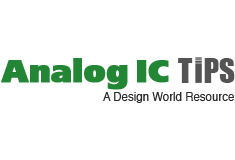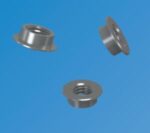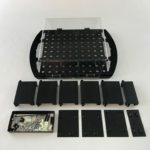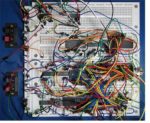Ultra-Low-Profile, Surface Mountable Threaded Inserts now include Metric and Imperial thread options. These inserts are specifically designed and packaged for use on PCBs in the same manner as other SMT components as a simplified method of adding threads to PC Boards. Manufactured from steel with a tin plate, these inserts offer an easy method of […]
PCB design
What AI can bring to PCB manufacturing
by Ken Ghadia, Sales Engineer, TechnoTronix The introduction of Artificial Intelligence (AI) in PCB manufacturing has largely improved the product quality, optimized the production process, and significantly reduced the manufacturing cost. AI drives independent automation of PCB production by using the vast data aggregated from several sensors. Machine learning and deep learning are the AI sub-domains […]
PCB assembly tips for medical device manufacturing
By Suresh Patel, Sales Engineer, Mer-Mar Electronics Medical PCBs are built with the highest quality standards to ensure the precision and reliability of medical devices. PCB fabrication and assembly processes are converging on greater accuracy of health monitoring and diagnostic devices. Flexible treatments and faster information exchange systems are possible due to the improved design, […]
PCB design suite incorporates IPC-2581 export capability
Number One Systems announced the release of Easy-PC version 26, which incorporates an IPC-2581 export capability, along with over 25 other new technology features based on user requests from professional PCB designers. Easy-PC version 26 incorporates a number of new and enhanced design rules checks (DRC) and design for manufacturing (DFM) options in both Schematic […]
Have you considered resistance soldering? Part 1
Resistance soldering is an alternative to conventional “pencil” soldering iron which offers some unique capabilities. The image of the electrical engineer or hacker bent over and using a soldering iron on a circuit board is a classic visual cliché of TV and movies (Figure 1). In most of these soldering images, the engineer is using […]
PCB development trends for 2022 and beyond
By Suresh Patel, Sales Engineer, Mer-Mar Electronics With recent technologies like 5G, IoT, and AI impacting the electronics world tremendously, there are a lot of developments in the PCB manufacturing industry now. New trends are catching up swiftly in the PCB development process. The estimated global PCB market in 2023 is around 70-75 billion dollars. […]
Breadboards evolve to meet 21st-century design needs, Part 3: The present and near future
The classic wooden breadboard is obsolete, but its name refers to a vital engineering tool that has changed to meet today’s component and design realities. Wooden breadboards are obsolete as platforms for circuits using modern components, of course, and so-called solderless breadboards are also of very limited usefulness. At the same time, the way designers […]
Breadboards evolve to meet 21st-century design needs, Part 2: Recent past and present
The classic wooden breadboard is obsolete, but its name continues to refer to a vital engineering tool that has changed to meet today’s component and design realities. As leaded components such as discrete transistors and low-pin-count ICs in DIP packages came into use in the late 1960s and 1970s, breadboarding technology evolved as well. Among […]
Breadboards evolve to meet 21st-century design needs, Part 1: The “Ancient” Past
The classic wooden breadboard is obsolete, but its name continues to refer to a vital engineering tool that has changed to meet today’s component and design realities. Breadboards have a special place and multiple meanings in the engineering lexicon. So, what is a breadboard? It can be a crude try-out version of a subcircuit to […]
Five considerations for mixed-signal PCB layouts
Printed circuit board (PCB) layout is an important activity when developing mixed-signal applications. A lot can go wrong, and everything needs to be correct for a successful design. Impedance control is an obvious consideration, but it needs to include trace resistance as well as parasitic inductances and capacitances. Maintaining signal integrity can be challenging. This […]










